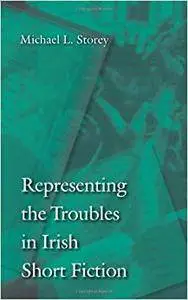Michael L. Storey, "Representing the Troubles in Irish Short Fiction"
English | 2004 | ISBN: 0813213665 | PDF | pages: 257 | 1.1 mb
English | 2004 | ISBN: 0813213665 | PDF | pages: 257 | 1.1 mb
Representing the Troubles in Irish Short Fiction offers a comprehensive examination of Irish short stories written over the last eighty years that have treated the Troubles, Ireland's intractable conflict that arose out of its relationship to England. Read chronologically, the stories provide insightful perspectives on the Troubles, from the 1916 Easter Rising to the recent sectarian violence in Northern Ireland. Nearly every Irish short-story writer during this period has written on the subject, from Corkery, O'Connor, O'Faolain, and O'Flaherty to Lavin, Kiely, Trevor, MacLaverty, Devlin, Morrow, and McCann, among others. The book examines their stories and places them in their proper historical and political contexts. In doing so, it demonstrates how Irish writers have embraced a variety of literary modes and techniques in order to track the varied and changing attitudes of the Irish toward every aspect of the Troubles, including revolution, violence, sectarianism, terrorism, and identity-thinking.
Stories about the Troubles began as the romantic expression of the intense nationalism felt by the rebels of the Easter Rising, but the violence and betrayal of the Civil War of 1922-23 led writers to adopt the mode of literary naturalism to express their disillusionment with nationalism. In the 1930s and 1940s Irish writers often treated the Troubles theme with humor and satire. As tensions increased in the middle decades of the century, culminating in a renewal of violence in Northern Ireland in the late 1960s and extending into the 1990s, writers turned their attention to realistic depictions of sectarian tensions and then to more graphic portrayals of violence and terrorism. In the last few years, writers have explored possible solutions to the Troubles, from the reconciliation of divided communities to the abandonment of cultural identity.
As the only comprehensive study of the subject, this volume makes an important contribution to an understanding of the treatment of the Troubles in Irish short fiction.



